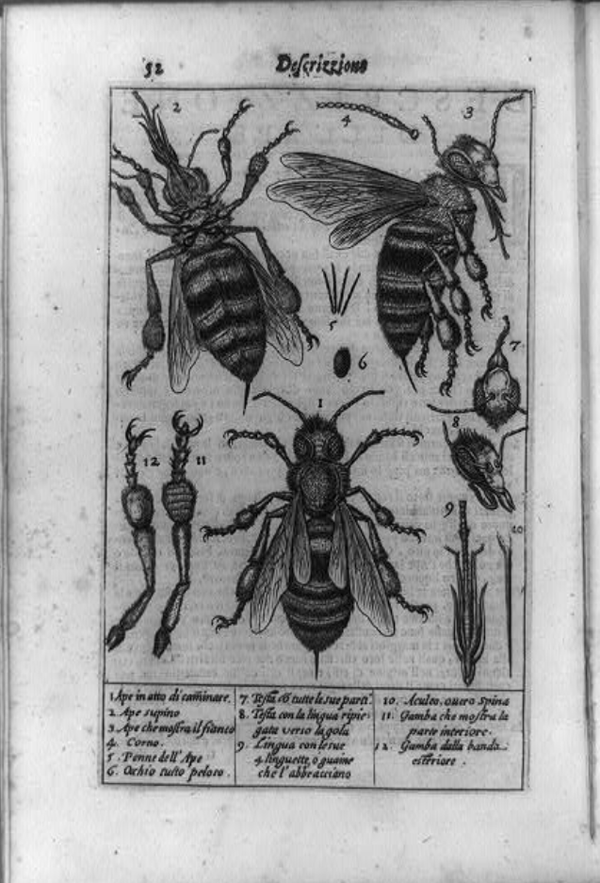Teach This Poem is a weekly series featuring a poem from our online poetry collection, accompanied by interdisciplinary resources and activities designed to help K-12 teachers quickly and easily bring poetry into the classroom.

The following activities and questions are designed to help your students use their noticing skills to move through the poem and develop their thinking about its meaning with confidence, using what they’ve noticed as evidence for their interpretations. Read more about the framework upon which these activities are based.
- Warm-up (whip-around): Look at the image of the honeybee. What do you notice about the insect? Why?
- Before Reading the Poem (in small groups): Read the article about honeybees. With your group, summarize your assigned inhabitant (either workers, drones, or the queen) and share your summary with the class. (Teachers, as students share, make a three-column chart on the board that they may use as a reference when they read the poem. Before students encounter the poem, it might be helpful to share this definition of equinox with them.)
- Reading the Poem: Read the poem by Elizabeth Alexander silently. Notice the words and phrases that jump out at you, then think about what you noticed as you annotate the poem.
- Listening to the Poem (enlist one volunteer to read the poem aloud): Listen as the poem is read aloud twice, first by a student and then by the poet. Write down any additional words and phrases that jump out at you. Call back the lines that you like by saying these lines aloud with your group.
- Small-group Discussion: Share what you noticed in the poem with your partner and another pair of students. Based on the details you just shared, what is happening to the bees during this time of year? How do you know?
- Whole-group Discussion: Compare and contrast what is happening to the bees and what is happening to the grandmother in the poem. How would you describe the grandmother? Why?
- Extension for Grades 7-8: Read more about honeybees in the article “How Honeybees Get Their Jobs” and write a poem that explores the different roles of honeybees. Or, continue researching honeybees and apiaries and write a short speech about whether you think that your school should or should not start an apiary.
- Extension for Grades 9-12: Continue to read and think about bees by reading the following poems: “Beehive” by Jean Toomer and “Where Honey Comes From” by Maggie Smith. Write an essay comparing and contrasting these poems with Alexander’s poem.
More Context for Teachers: In a 2017 conversation with Maria Popova, Elizabeth Alexander said, “I believe that human beings want to be seen and want to be known. Want to be recognized, want to feel true. And that is what poetry strives to do. It’s the big namer, the big describer, the way of fixing in time by description with tremendous precision.” Read more.
